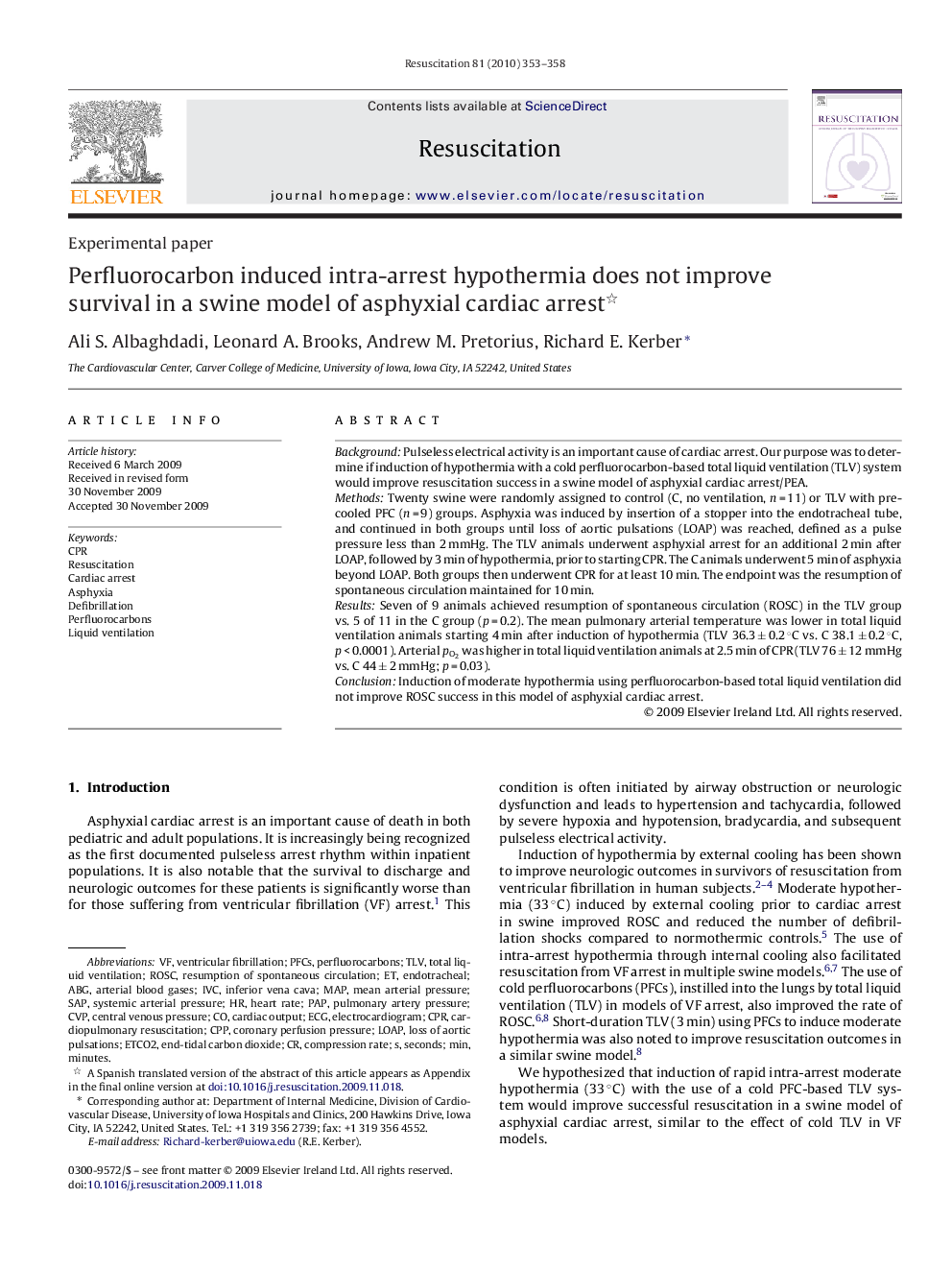| کد مقاله | کد نشریه | سال انتشار | مقاله انگلیسی | نسخه تمام متن |
|---|---|---|---|---|
| 3010481 | 1181517 | 2010 | 6 صفحه PDF | دانلود رایگان |

BackgroundPulseless electrical activity is an important cause of cardiac arrest. Our purpose was to determine if induction of hypothermia with a cold perfluorocarbon-based total liquid ventilation (TLV) system would improve resuscitation success in a swine model of asphyxial cardiac arrest/PEA.MethodsTwenty swine were randomly assigned to control (C, no ventilation, n = 11) or TLV with pre-cooled PFC (n = 9) groups. Asphyxia was induced by insertion of a stopper into the endotracheal tube, and continued in both groups until loss of aortic pulsations (LOAP) was reached, defined as a pulse pressure less than 2 mmHg. The TLV animals underwent asphyxial arrest for an additional 2 min after LOAP, followed by 3 min of hypothermia, prior to starting CPR. The C animals underwent 5 min of asphyxia beyond LOAP. Both groups then underwent CPR for at least 10 min. The endpoint was the resumption of spontaneous circulation maintained for 10 min.ResultsSeven of 9 animals achieved resumption of spontaneous circulation (ROSC) in the TLV group vs. 5 of 11 in the C group (p = 0.2). The mean pulmonary arterial temperature was lower in total liquid ventilation animals starting 4 min after induction of hypothermia (TLV 36.3 ± 0.2 °C vs. C 38.1 ± 0.2 °C, p < 0.0001). Arterial pO2pO2 was higher in total liquid ventilation animals at 2.5 min of CPR (TLV 76 ± 12 mmHg vs. C 44 ± 2 mmHg; p = 0.03).ConclusionInduction of moderate hypothermia using perfluorocarbon-based total liquid ventilation did not improve ROSC success in this model of asphyxial cardiac arrest.
Journal: Resuscitation - Volume 81, Issue 3, March 2010, Pages 353–358